PHIL BERG May 31, 2022 All Feature Vehicles
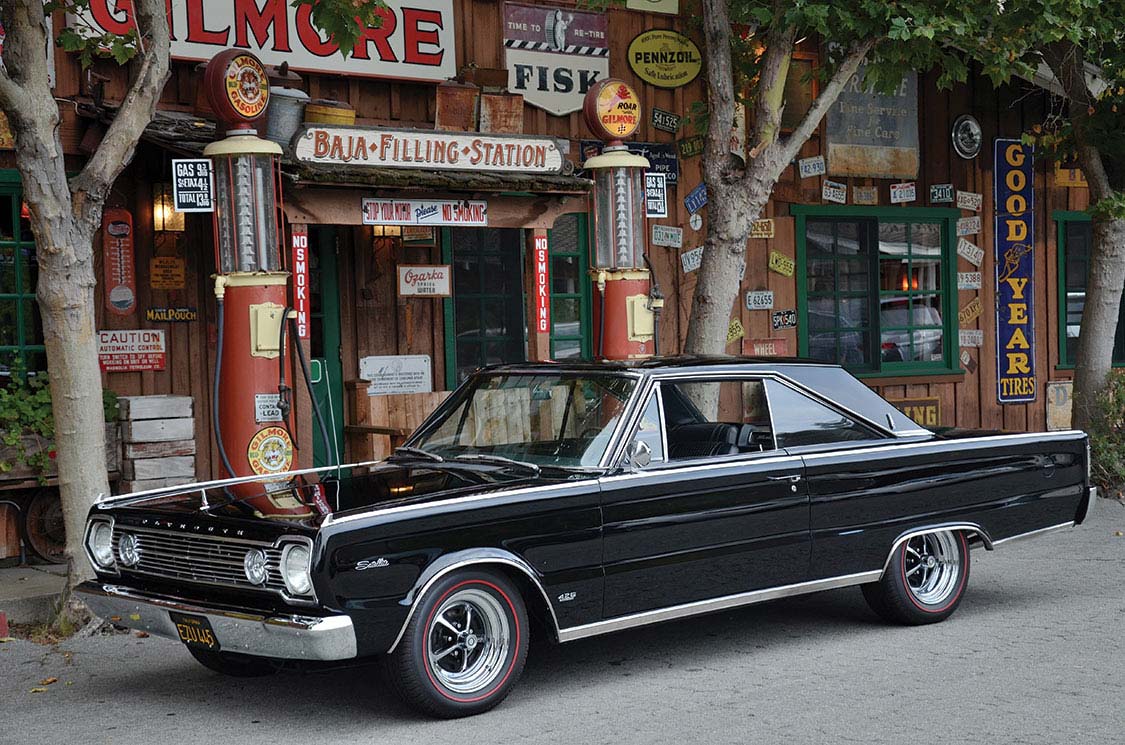
What actually appeals the most to Dr. Phil Scheinberg about his demure-looking tuxedo-black 1966 Plymouth was that it was originally white. Not that he wanted a white car, but because he thinks it was the only white Belvedere Satellite built that year that had both a 4-speed manual transmission and just one special, expensive option: An excessively large new engine with two giant 4-barrel carburetors and uniquely designed hemispherical combustion chambers.
It was known as a “Hemi.”

“To me, the Hemi is the rock star of muscle cars because it had such a fearsome reputation,” says Scheinberg, a retired surgeon and lifelong car nut. “This car was originally one of one, but an owner later had it painted black. Personally, I love the black; it’s something evil-looking that fits with my personality.” This history is important to Scheinberg as a collector, because it represents how America used to build custom cars on a mass-production assembly line.
For 1966, Plymouth built just a total of 844 Belvederes equipped with the 426-cu.-in. Hemi, the first street-legal homologation of the racing engine that swept the Daytona 500 in 1964, with a record speed set by winner Richard Petty. Although Petty’s race engine is estimated to have made more than 700 hp, the 750-lb. street motor in Scheinberg’s car was rated at 425 gross hp. (In comparison, a modern aluminum Chevy small-block LS3 weighs 400 lb. and makes 430 net hp.) The street engine was produced for eight years, although production-based top-fuel drag-racing classes are still dominated by exotic versions of the same basic design.
The original base price of Scheinberg’s Hemi-equipped car was $3850, which today would be about $27,000, adjusted for inflation. Classic car insurance company Hagerty lists average values of coupes trading today at approximately $71,000, and more for convertibles, of which only 27 were made.
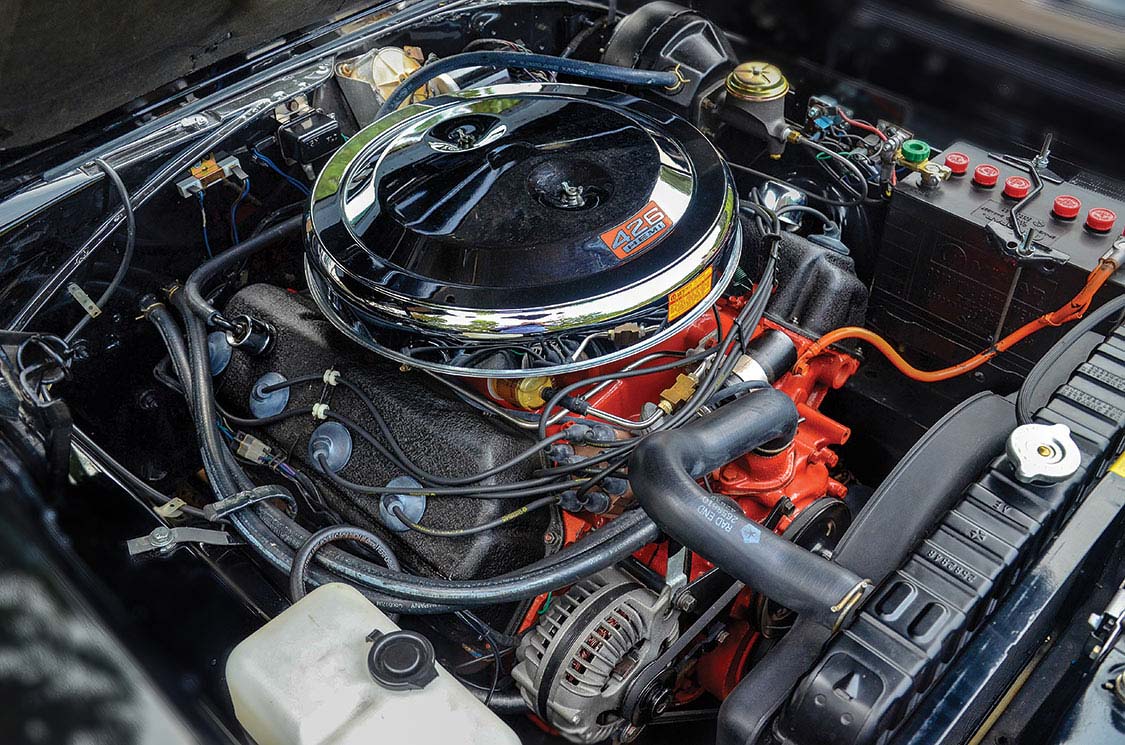
“I just thought it was fun—there are lots of Chevys and Fords, but you just don’t see a lot of Hemis,” he says. “The Hemi really was a most unusual thing—a very impractical motor with terrible fuel economy. It’s just a big thug.” In 1966, the Hemi option cost a heavy $1000, which translates into $7000 today, again adjusting for inflation. And the fuel economy? About 10 mpg.
Scheinberg’s Hemi has its original engine, gearbox and differential, rare now because in the day drag racers often modified and broke such parts. “It has what you’d call ‘matching numbers’, which seem to be very important to muscle car collectors,” he adds.
Scheinberg bought the Hemi from a collector three years ago, part of his personal evolution from classic European cars to a simpler and more nostalgic appreciation of American cars and history. “I thought, ‘Wouldn’t it have been fun to have had a Hemi when I was in college?’ I grew up in Florida. Muscle cars were just making an appearance—guys had rods and we had the surf culture, but not the whole car culture like California had. I wanted a 427 Chevy Nova, but my dad wisely thought that was a bad idea, and so he stood in the way of me ever getting a muscle car. He said, ‘Son, that ain’t gonna happen. Live in my house, live by my rules.’” So Scheinberg spent his high school and college years in a 1962 Volkswagen Beetle. “I honed my driving skills in that car, in Florida on wet roads—it was a lot of oversteer fun.
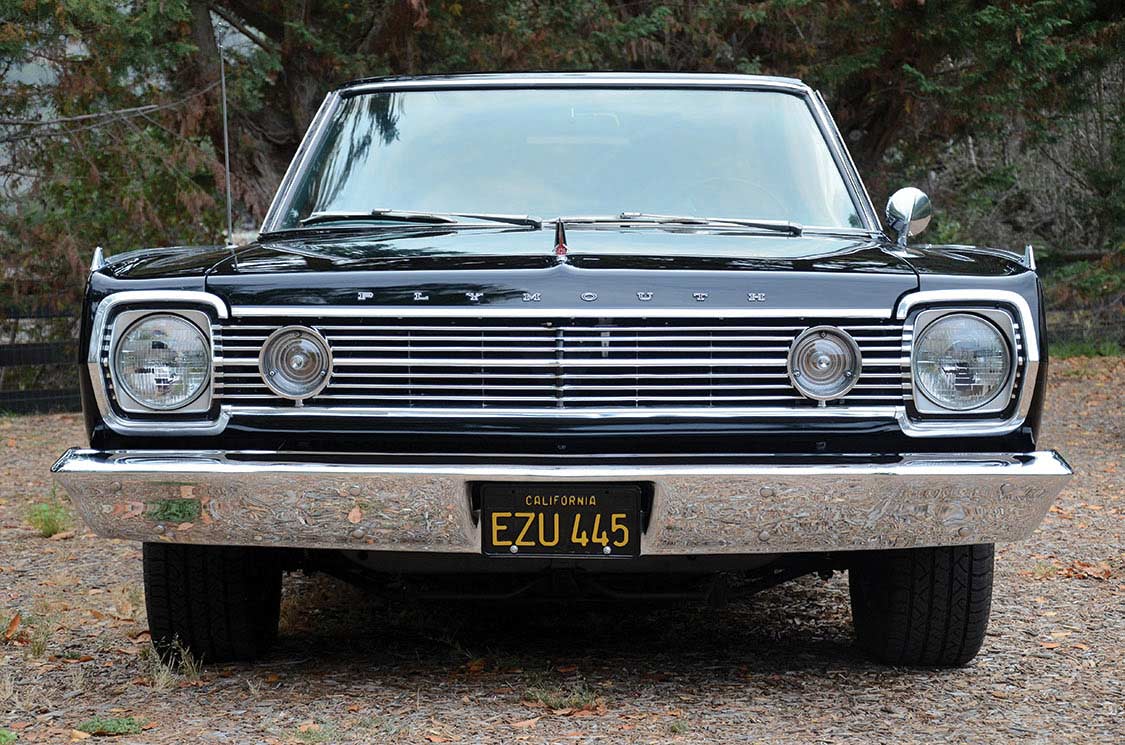
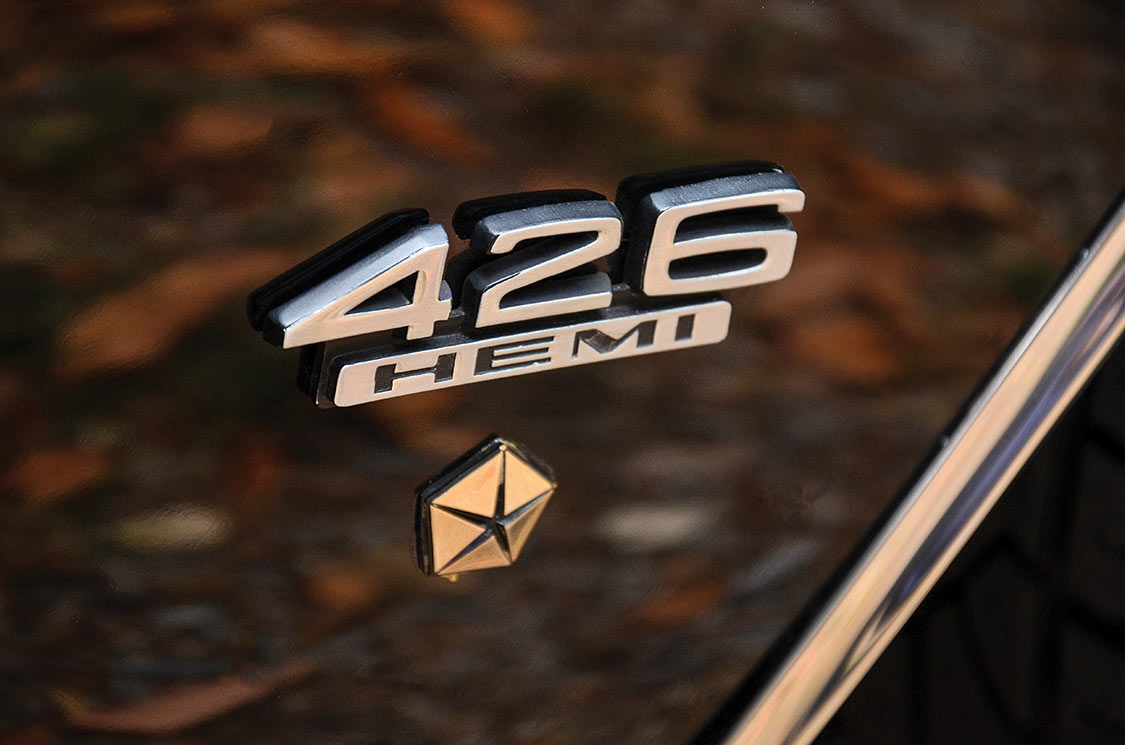
“You quickly learn when you try to steer the Hemi why they call it a ‘muscle car,’ because power steering was not originally offered. I drive it every week, but it would be impractical for daily use. The steering is slow, and while the heavy-duty drum brakes don’t fade in normal street driving, I would not expect much from them with repeated heavy usage.”
Scheinberg chose to slightly retard the timing and use a fuel additive to prevent detonation in light of California’s marginal fuel quality. “It feels way more ferocious on race gas,” he notes. “Hemis were made basically to get up to 2500 rpm and then really take off. This is a motor that you’re going to hammer for an entire a quarter mile, not a shorter drag race.”
“It never seems to fall off its power band, so you better shift before it goes too fast—there’s a lot of inertia in those big engine parts. ”
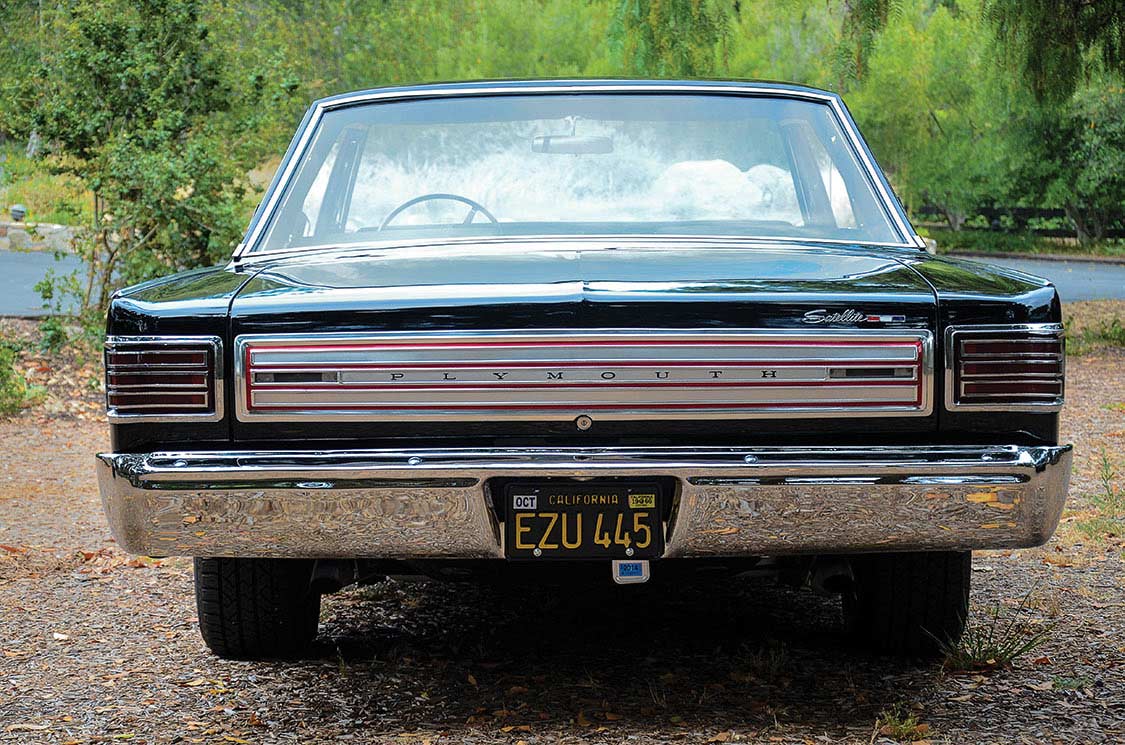
Plymouth advertised a quarter-mile time of 13.8 seconds at 104 mph for the Hemi in 1966, which corroborates Scheinberg’s estimates. “With the right driver and no regard to breaking anything, it will do a 13-sec. quarter, and with slicks and headers 12 sec.,” he says. For contemporary reference, Car and Driver tested a stock $63,000, 662-hp Ford Mustang Shelby GT500 in 2013 at 11.9 sec. in the quarter mile.
Peak horsepower comes at 5000 rpm, where the engine feels strong, although Scheinberg cautions that it will hit 7000 rpm easily. “It never seems to fall off its power band, so you better shift before it goes too fast—there’s a lot of inertia in those big engine parts,” he warns. And the engine lets you know when it’s working hard. “Two sets of interesting-looking shaft rocker arms under each valve cover mean there’s plenty of monkey motion going on under there,” he adds. ”There’s also a lot of intake and exhaust racket.”
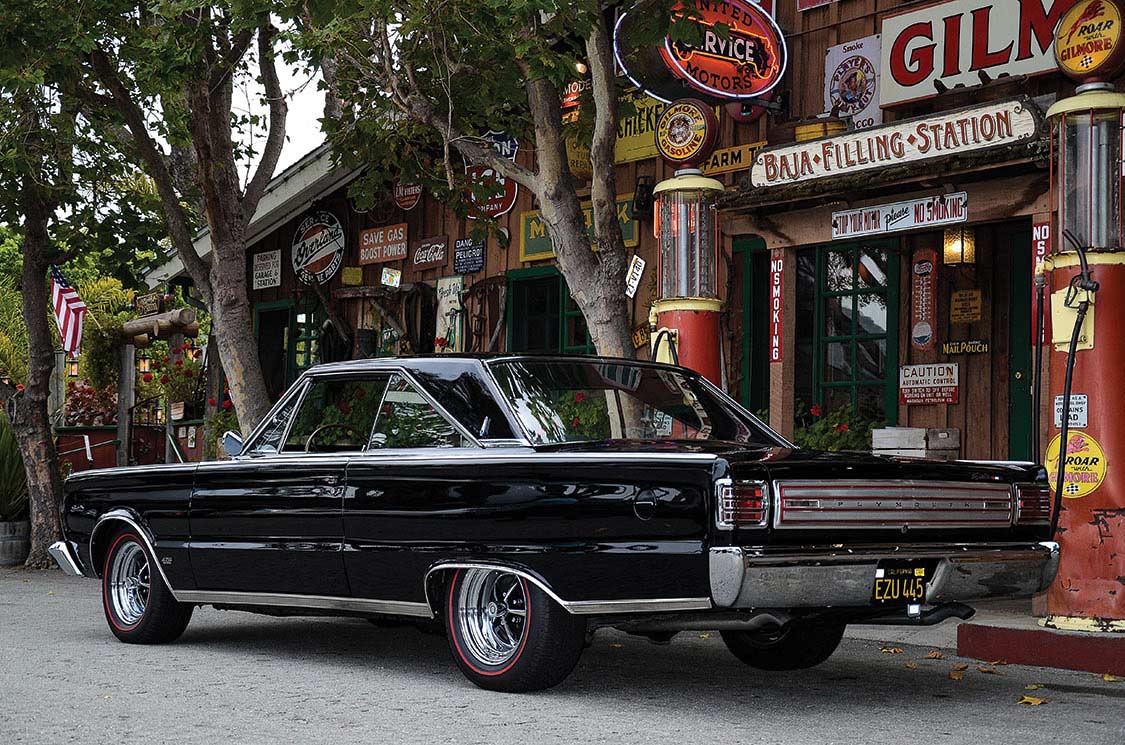
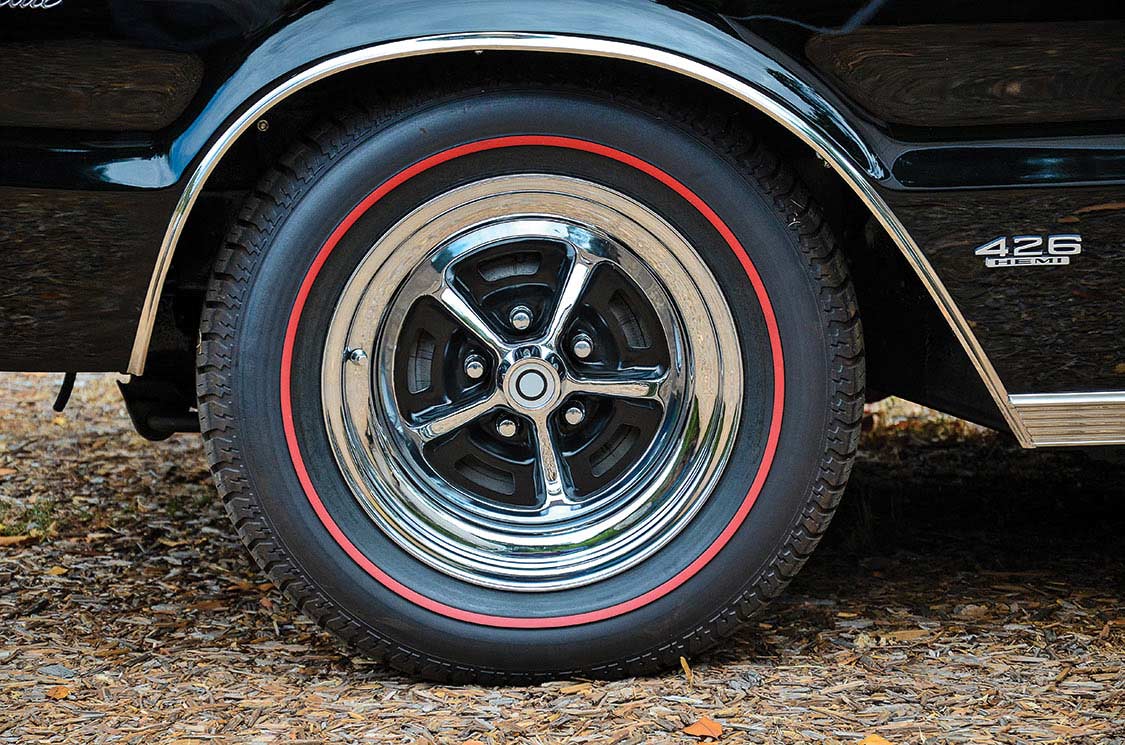
Scheinberg once drove the Plymouth on a tour he arranged for a Ferrari club. “There were some pretty good straights where you can act like a hooligan,” he admits. “It shocked the Ferrari guys trying to keep up with us—I saw 120 mph on the speedo. And while it’s a big floaty car that’s clearly a dinosaur by current standards, it does corner fairly flat. And thank God it’s got a vacuum booster on the brakes, or it would never stop. I understand how the captain of the USS Enterprise felt. The Belvedere looks like you could park a Harrier on the hood or on the trunk. It’s got a lot of sheet metal, but despite this, some full-size cars today are considerably heavier than this. I think it’s under 4000 lb.”
The Hemi was a long time in coming for Scheinberg, who was exposed to a variety of exotic European cars as a youth, “There was a kid at my high school whose dad dropped him off every day in a variety of exotics,” he recalls. “He had an E-type roadster—it was just gorgeous—and a 300SL, and a BMW 507. That lit off my interest.”
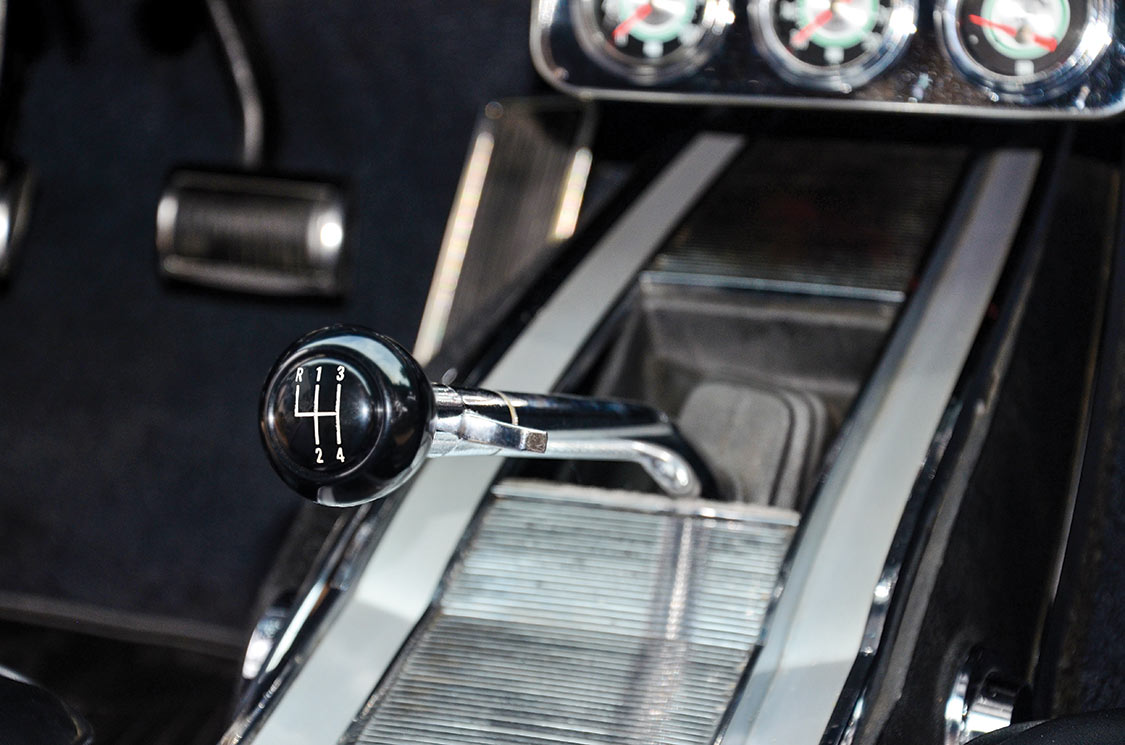
After college Scheinberg bought a BMW 2002, and wound up putting 300,000 miles on it. “That car cemented my love of automobiles and quasi-sports cars,” he says. Once his medical career took off, he bought a 300SL, then four 280 SE convertibles in a row. Then he moved to a succession of Porsche 911s and 356s; and then Ferraris, starting with a 365 GTC. “We’ve had a whole variety of other things: Maserati 4-cams, turbos, a Sunbeam Tiger, Jags, Alfas, Lamborghinis and a Lotus Elan.” And now a big, black Plymouth Hemi.
Through it all, Scheinberg distinctly remembers two American cars as making early impressions that eventually led him to buy the Plymouth. “My dad bought a new 1959 Corvette and I used to abuse the hell out of it,” he admits. His father’s co-worker also had a 1964 Ford Galaxie 427. “He was a laboratory engineer and a hot-rodder and made a monster out of that car. That’s how the seed got planted in my head. So today, this is what I really like—my primary interest. I’m in an American stage. Like when you’re a young man: so many women, so little time. Same with cars.”
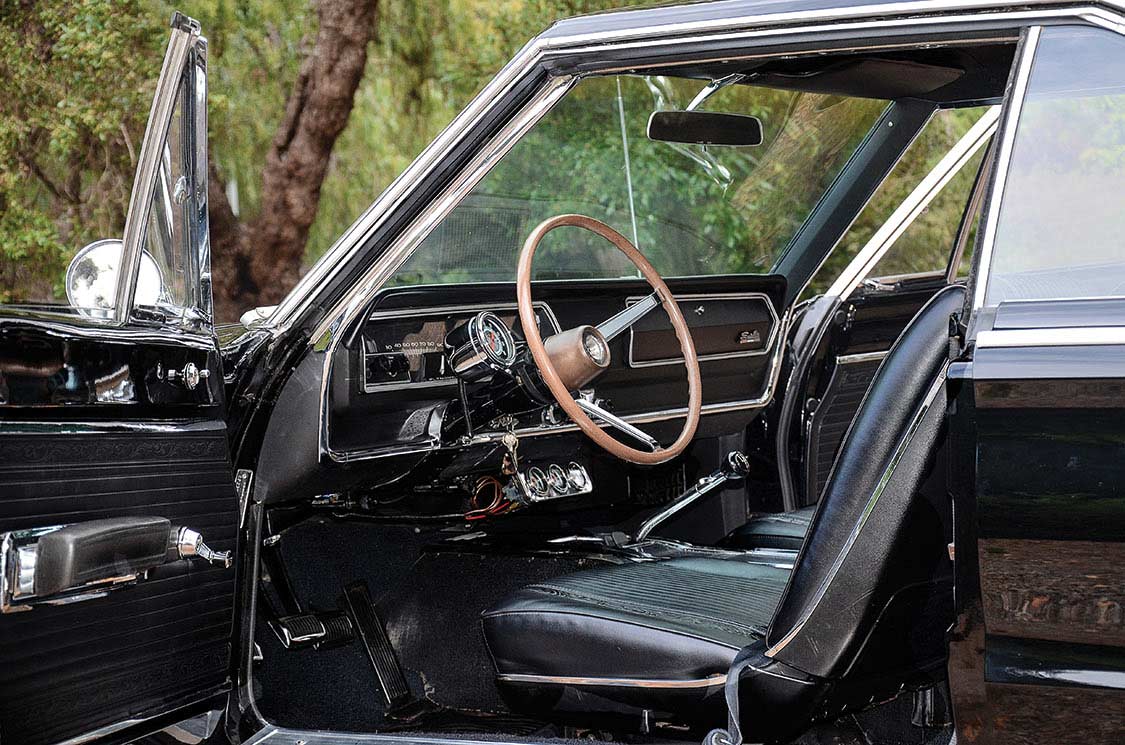
An enthusiastic mechanic and fabricator, at the time of this interview Scheinberg was in the midst of a complete 1965 Corvette 396 restoration while also fixing crash damage from a shunt in his vintage Sting Ray race car. “I broke a couple of ribs in that crash,” he admits. “But vintage racing is what I really like. If you like cars, you’ve got to do it. The more mechanical, the greater the appeal. New cars are of course much better, but in comparison to the early Sting Rays and most especially that big Plymouth Hemi, they’re soul-less.”